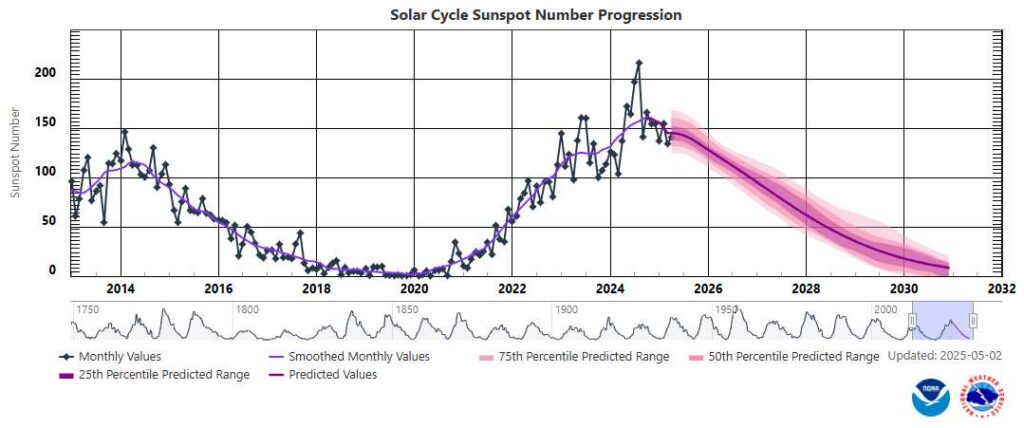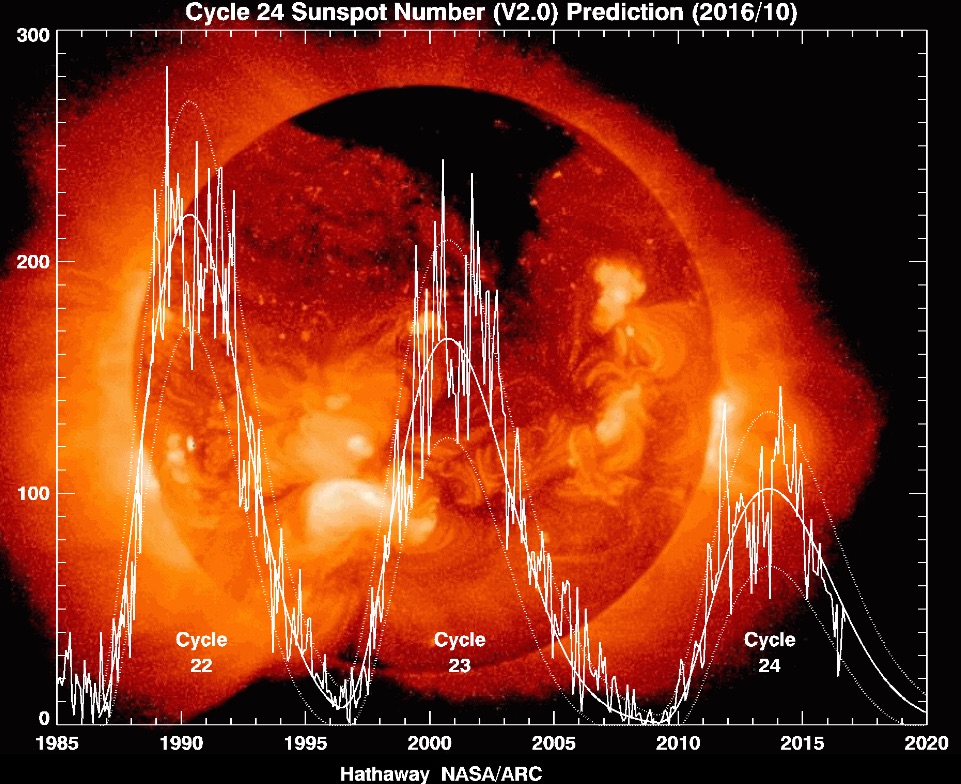Solar Cycle 25 has been an exciting one for sure, with many X-level solar flares and a few excellent opportunities for those of us who live around 41 degrees latitude to see auroral activity.
This past week several notable flares corresponded with large Coronal Mass Ejections (CMEs) that were Earth effective. One of those flares impacted earth and produced a Major G4 Geomagnetic storm (in fact, it was just a tick below the level of Extreme G5). The CME impacted earth after 1500z Oct 10, causing the Interplanetary Magnetic Field (IMF/Bz) to point south, creating perfect conditions for aurora.
Here in RI, last light was around 6:45 PM local time and by 7:15 we were in a remote area with good views to the North, East, and West. The display was stunningly bright to the naked eye. At one point the red/pink color in the sky was so intense that I noticed the ground was reflecting the color. The photos below were taken between 23:20 and 23:30 UTC.
The Geomagnetic storm continued for almost 12 hours as shown in the Space Weather Prediction Center graph below.
As always two wonderful sources for Amateur Radio operators interested in solar condition are:
Club member Bruce NJ3K, who lives in PA commented that 6-meter propagation was quite enhanced during this disturbed condition, likely caused by auroral propagation.
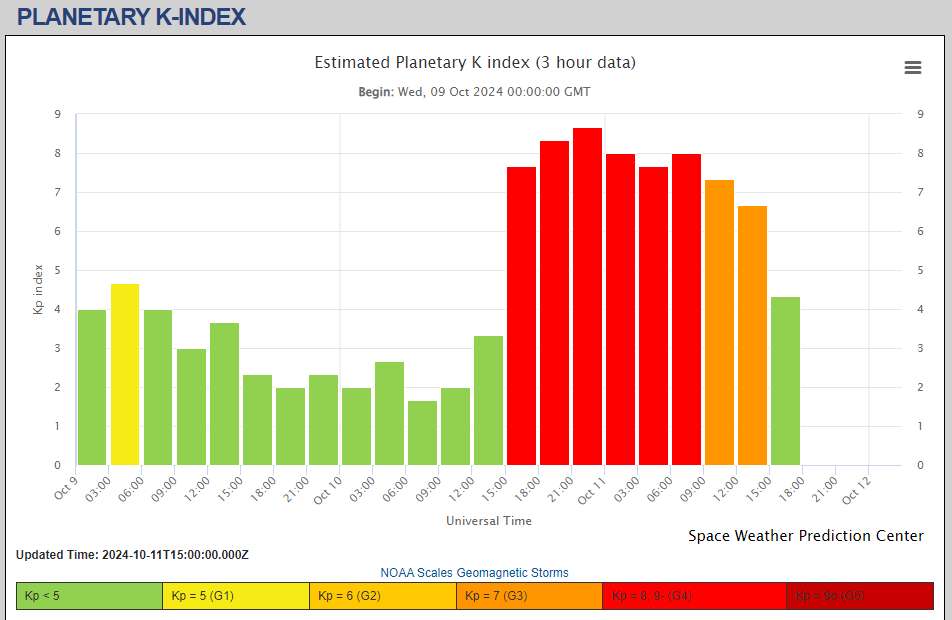
Space Weather Prediction Center record of K Index showing severe conditions around October 10
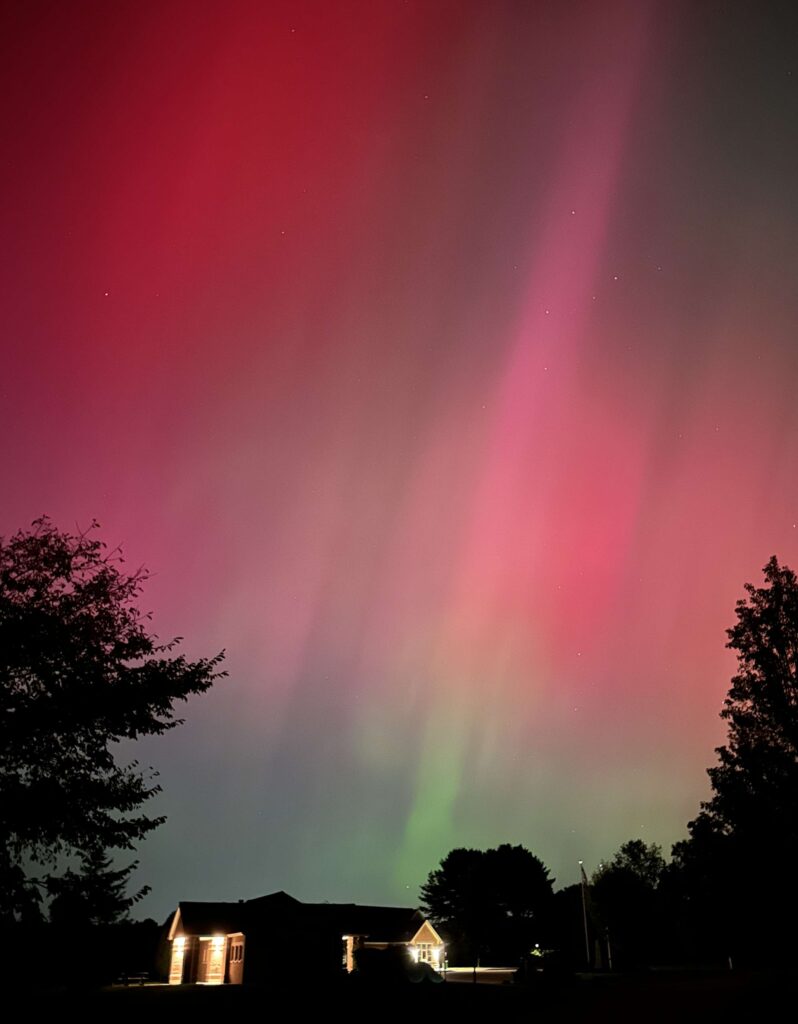
Photo by WB4SON taken around 23:25 UTC in Exeter Rhode Island
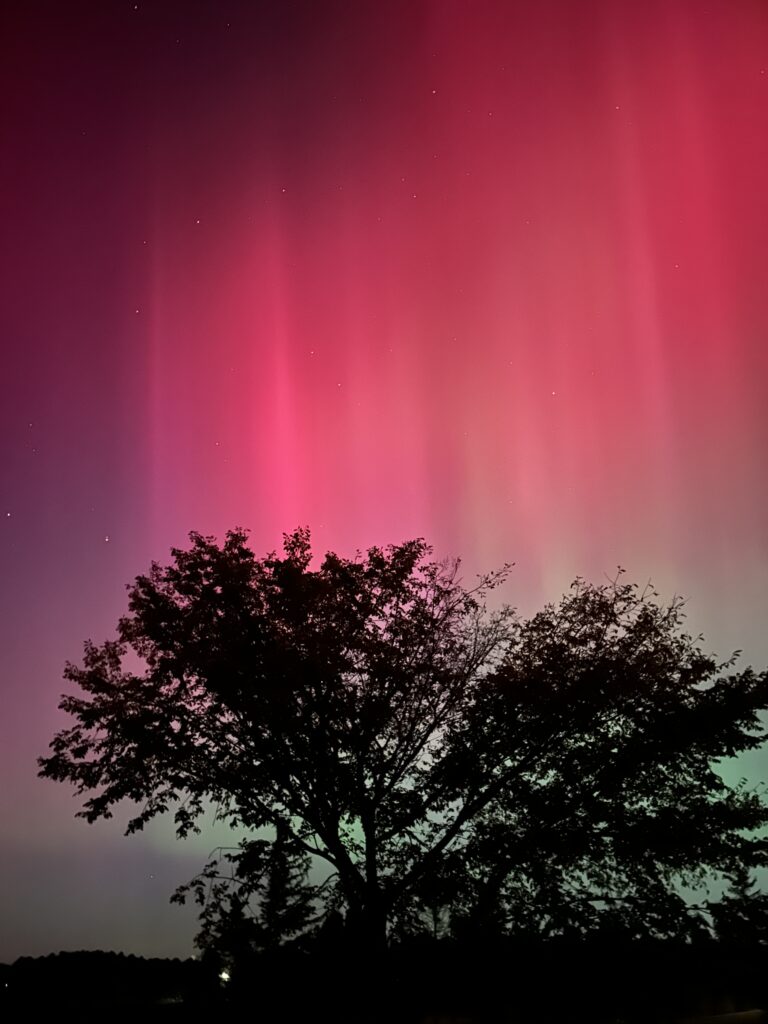
Photo by WB4SON taken around 23:20 UTC in Exeter RI

